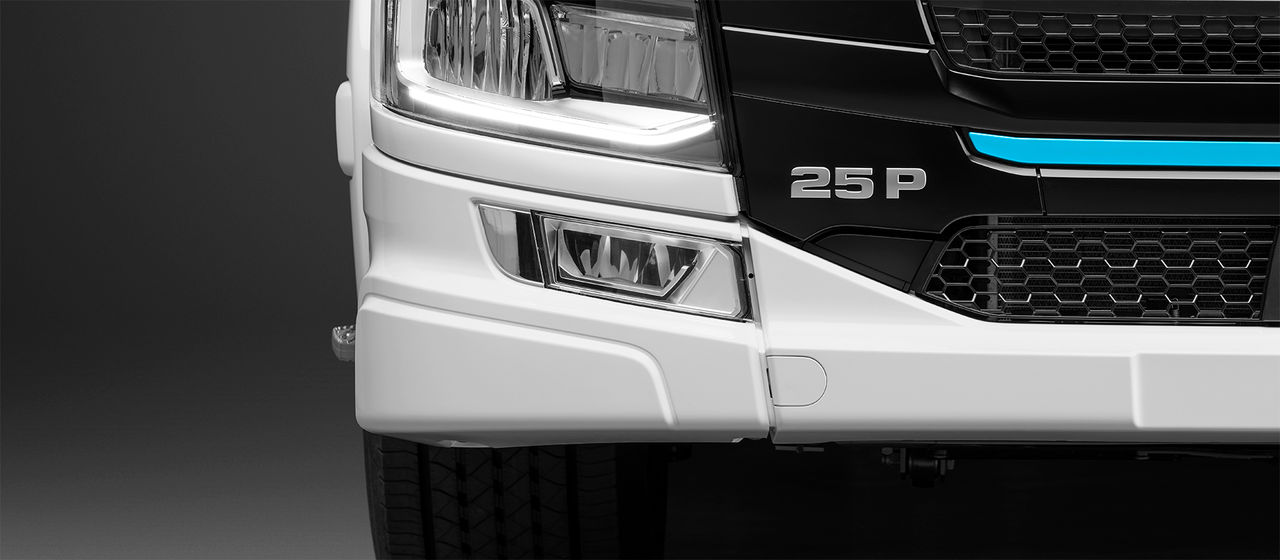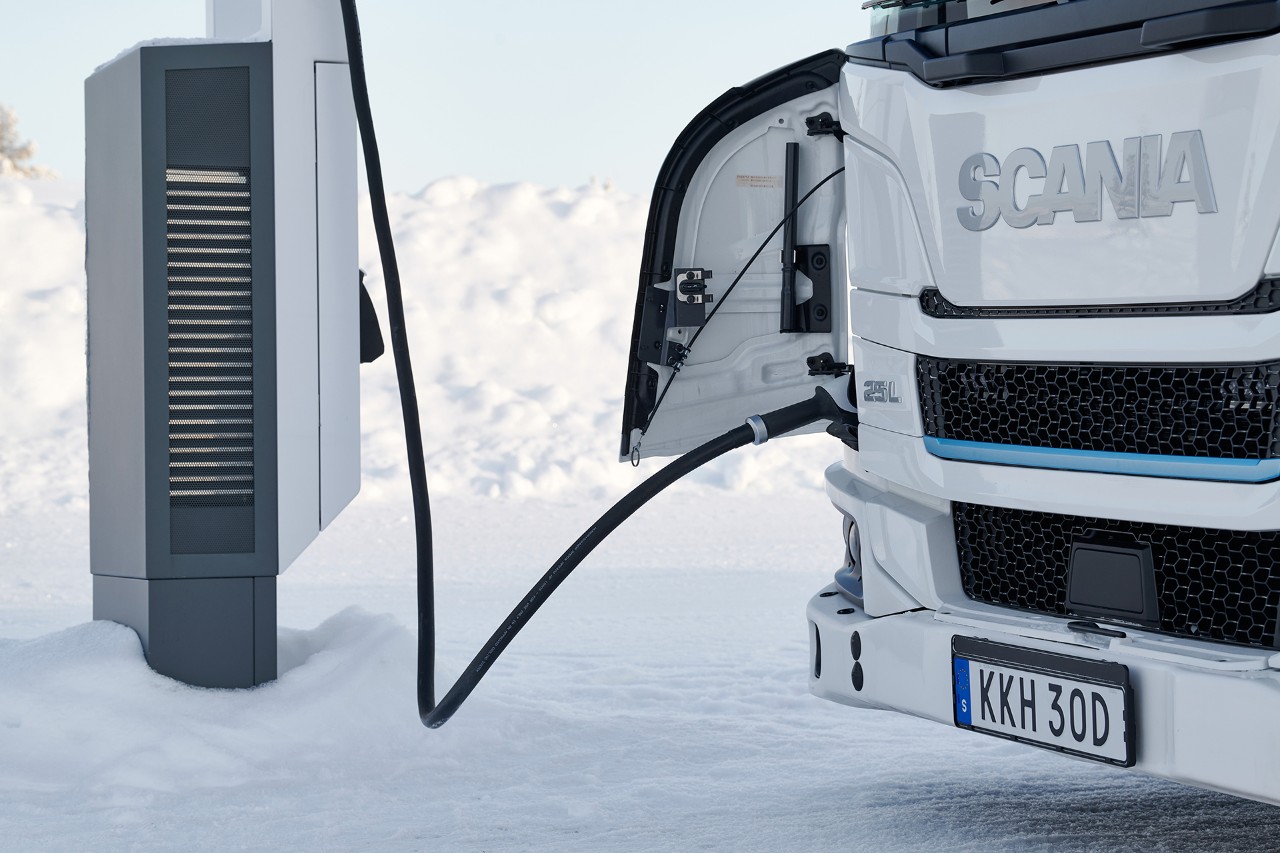
Top 11 factors that affect range of a BEV
A common question many drivers ask is, “How far can a battery electric vehicle drive?” The answer depends on several variables – and the good news is that you can influence many of them yourself.
With Scania’s latest product line-up, our 29-tonne GTW BEV now has a range of 520 km, a 42-tonne truck reaches 470 km, and a 64-tonne BEV can achieve 320 km. But exactly how far you can go depends on a number of conditions. We spoke with Ines Kasumovic, an expert in e-Mobility at Scania, to explore the key factors.
1. Battery capacity
Battery capacity plays a key role in determining range – more capacity means a longer range. But this must always be balanced against the weight, cost and lifespan of the batteries, Kasumovic notes.
“The most important thing is to have enough capacity for your transport task – no more, as excess capacity reduces the payload you can transport. Since batteries are a significant part of the cost of a BEV, you should also ask yourself how much capacity you actually need to pay for.”
The state of charge (SoC) window also affects range, as BEVs often limit usable capacity to preserve battery health, meaning the usable capacity is slightly less than the total capacity. Scania offers 75% and 83% SoC battery options.
2. Load and weight
The weight of the load directly impacts the range of a BEV. Heavier loads consume more energy – basic physics at work.
“That’s why, in line with the previous factor, you should always aim to strike the right balance between having enough capacity for the transport task and minimising unnecessary weight,” says Kasumovic.
3. The semi-trailer
During the everyday operation of BEV tractors, the semi-trailer can be changed multiple times per working day. Tractor and semi-trailer each make up half of the vehicle combination, and both contribute to energy consumption through their mass, aerodynamics, and rolling resistance.
”If the BEV tractor and trailer typically stay together, it’s recommended to use a lightweight trailer with aerodynamic side panels, a boat tail, efficient low-rolling-resistance tyres, and properly aligned wheels.” says Kasumovic.
4. Driving style and speed
Your driving style can have a significant effect on your BEV’s range. Gentle acceleration and braking over longer periods are more energy-efficient than abrupt, hard inputs In fact, your goal should be to avoid using the brake pedal whenever possible.
“The key is to use smooth, prolonged braking, apply light pressure to the accelerator, and carefully plan your route before setting off,” explains Kasumovic.
5. Regenerative braking
Imagine a truck that refuels itself – and extends its range – when you brake. That’s how battery electric vehicles work. When you brake, the electric machine acts as a generator, feeding energy back into the batteries. As a driver, you can maximise this effect by braking efficiently.
“It’s preferable to use the auxiliary brake as much as possible rather than the service brake,” says Kasumovic. “A good tip is to familiarise yourself with the operation of the auxiliary brake and plan your braking well in advance, considering topography, vehicle speed, and load.”
Regenerative braking can save significant amounts of energy, something she and four colleagues experienced first-hand during a recent record-long trip with a Scania BEV from Sweden to Turkey, covering nearly 4,500 km.
“In total, our truck regenerated 20 percent of the energy on the trip. It’s a very good figure for an unfamiliar route. On a familiar route, we could have optimised the driving even further and achieved an even higher share.”
6. Charging and battery condition
Efficient charging and maintaining battery health are key to maximising a BEV’s range. Charging at the home depot is often the fastest and most cost-effective option, though public charging may sometimes be needed en route.
“Charging is an important part of the range,” says Kasumovic. “That’s why tools and services like the Scania Driver App and Scania Charging Access are essential for locating public truck charging stations and understanding their capacities.”
Remember you rarely need to fully charge the battery – charging just enough for the transport task saves time and preserves battery health. Scania’s fast-charging batteries (375 kW) enable adding 250 kilometers of range during a 45-minute break with a typical 520-kWh long-haul BEV.
7. Terrain and road conditions
Terrain and road conditions can significantly impact a BEV's range. Steep inclines require more energy to climb, while declines can help regenerate energy. Uneven or poor surfaces increase rolling resistance, further reducing range.
“Planning routes with smoother roads and moderate inclines can help optimise energy consumption,” Kasumovic says. “Regenerative braking on hilly terrains can also improve range, especially with heavier loads downhill.”
8. Climate and temperature
Contrary to what many think, climate and temperature don’t have as big an effect on range as tyre rolling resistance (around 41%) and air drag (around 39%), which are the most energy-consuming factors.
However, precipitation, tailwinds and side winds can impact energy consumption, and there’s another important factor to consider, according to Kasumovic.
“A big energy thief is starting your BEV with cold batteries and a cold cab in a cold winter climate. That’s a waste of range. Instead, make sure to pre-heat the batteries and cab at the depot before setting off.”
9. Tyres and rolling resistance
Rolling resistance is the single most significant factor affecting a BEV’s range. Therefore, the choice, maintenance, and condition of your tyres play a crucial role in determining the truck’s range.
“Additionally, warm tyres have less rolling resistance, while cold tyres in winter conditions create greater resistance.”
10. Air resistance
Air resistance is the second most significant factor affecting a BEV’s range. Therefore, Scania’s BEVs are optimised to minimise the effects of air drag. Kasumovic advises letting the tractor aerodynamics function as intended.
“Don’t ruin it by adding things like extra mirrors or headlights to the cab. This increases air resistance and reduces your range.”
And don’t overlook the semi-trailer. If possible, it should be equipped with aerodynamic side panels and a boat tail, which together can increase the range of long-haul BEVs by up to 20 percent.
11. AC and other auxiliaries
Auxiliary systems in a BEV, such as cab heating and cooling, refrigerators, battery cooling, and others, account for only about five to six percent of the total energy consumption.
“It’s surprising to many that the AC consumes so little energy,” says Kasumovic. “On a recent trip, we endured traffic jams lasting for hours in the summer heat. We ran the AC, fridge, and entertainment system at full blast, but the truck still used very little energy.”
More information in Scania’s films
Want more information on how to use BEV’s potential to the max? Check these links:
- Scania’s electric truck driving tips on YouTube.
- 5 electric truck driving tips that will save you energy (article).
Read more

Charging
We help you find the right charging solution for your specific need.
